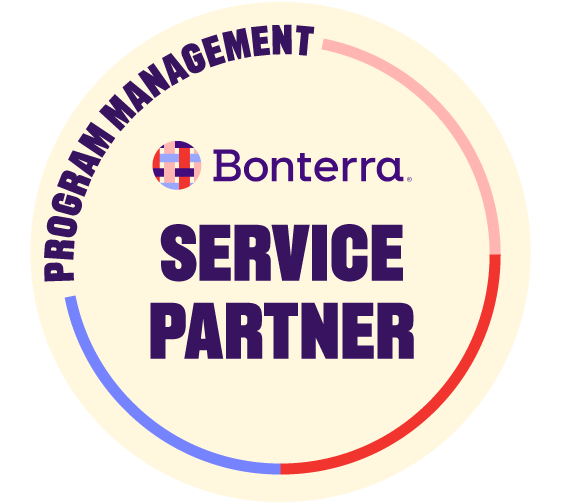As the year draws to a close, it can be an overwhelming time for nonprofits.
With more than 50% of nonprofits receiving the majority of their annual donations in the last quarter, the focus shifts towards year-end giving campaigns.
However, the end of the year is also an essential time to ensure your reports are in order.
To help ease your workload at this busy time of year, we’ve outlined our essential end-of-year reporting checklist for nonprofits.
Whether you’re just getting started on collecting data or ready for completing your reports, this checklist has everything you need from start to finish!
3 Must-Have Nonprofit Year-End Reports
Make sure you’re prepared for the year-end with these reports:
3. Financial Reports & Statements

It is important to note that these are not mutually exclusive reports – there will be heavy crossover between each of these categories.
1. Programmatic Reporting
Programmatic reporting includes reports to grantors, funders, and other key stakeholders. Understanding the difference between outputs and outcomes is crucial for measuring the progress and success of program(s). To ensure the success of your program(s) and accuracy in reporting at the end of the year, it’s essential to define outputs and outcomes clearly and realistically from the start.
Outputs are the tangible products or services nonprofits provide, such as training sessions, workshops, publications, or equipment. On the other hand, outcomes are the positive changes or benefits that arise from your nonprofit’s program.
There are challenges many nonprofits face when it comes to both output and outcome reporting. Data collection and analysis can be a headache. It’s time-consuming and complex, especially with multiple data sources, methods, and stakeholders involved. Many organizations also express concerns about data quality, reliability, and validity.
Another common challenge is storytelling and data visualization. It can be difficult to convey the impact and value of your program(s), especially with complex or technical information or sensitive topics. To captivate your funders and other audiences, it’s important to present your data in a clear, concise, and engaging manner and let it tell your story.
Some reports require specific forms or Touchpoints to be built in to ensure all grant data points are captured. For that reason, it’s important to identify the necessary data points at the start of the grant period, it is crucial to engage your Apricot or ETO administrator early in the process to ensure it is being tracked in the system.
But fear not, Treadwell can help you overcome these problems.
What our clients say…
“As a dual Domestic Violence/Sexual Assault agency with ten VOCA funded projects, quarterly reporting to the Office for Victims of Crime (OVC) in the past was extremely time consuming and often problematic for our agency. After working with Treadwell to revise and streamline our reports, we are now able to pull data and complete the reports in the OVC system in a fraction of the time! The reports not only run quicker, but more importantly, they are more accurate. They are also now easier to read and follow due to Treadwell’s ability to make the data visually appealing. Overall, our experience working with Treadwell has been fantastic. We plan to work with them again in the future and would definitely recommend their services to any agency looking for report building support.”
Casie Pauley, Director of Grants & Contracts at WEAVE™
To address the data challenges, it’s important to develop a data collection and analysis strategy that fits your program’s scope, budget, and timeline. Treadwell can help you ensure accurate data and efficient analysis.
“Without Treadwell’s assistance to create comprehensive reporting from our raw data, we would have been unable to evaluate whether we were moving the needle in crucial areas of social determinants of health through our interventions. We were able to use Treadwell’s reporting as the basis for successful grant applications and thus able to continue making a difference in our client’s lives.”
Kellie Childs, Technical & Project Manager at Ypsilanti Meals on Wheels
With the right approach, navigating the world of reporting becomes much more manageable. By aligning reports requirements with your stakeholders’ goals and expectations, you can maximize your chances of achieving your desired results. Discover what to include in your grant report in our white paper.
If you need more help, we can assist you with your grant reporting. Some examples of federal reports that Treadwell has expertise in include VOCA, VAWA, CLSSP, HUD, SASP, and more. Contact us for more information or for assistance with your specific reporting needs.
2. Fundraising Reports
Fundraising continues to be a critical aspect for the survival and success of most nonprofits. It is imperative to keep a close eye on the amount of funds raised every month, quarter, and year, primarily as it allows your organization to gauge operational impact and potential for the future.
At the end of each year, it becomes even more essential to examine the previous year’s fundraising efforts to identify areas of strength and those that require improvement. Your end-of-year fundraising report should be a comprehensive evaluation of your fundraising efforts throughout the year.
A few key performance indicators (KPIs) come into play when it comes to evaluating fundraising effectiveness. Some of these include fundraising ROI, donor retention/churn, and new donor additions. Explore other KPIs to track in your fundraising reports in our white paper.
Overall, assessing these will help you evaluate their performance and growth, and ensure ongoing success and long-term financial sustainability.
3. Financial Reports & Statements
Despite not being focused on generating profits, funds are still an important aspect for nonprofits to carry out their essential work. As such, they typically rely on donations, grants, and other financial support mechanisms to sustain their operations and grow their impact.
To ensure transparency and accountability in handling these funds, you must prepare four end-of-year financial statements: Statement of Financial Position, Statement of Activities, Statement of Cash Flow and Statement of Functional Expenses. To learn more about what to include in each of these financial statements download our white paper.
Not only are these four statements mandatory to comply with IRS rules, but are also the best way to achieve transparency and build trust. In addition, by comparing actual financial results with budgeted amounts, you can identify areas where they have performed well and areas that need improvement.
Besides the above mentioned financial statements, there is other financial data that you should include in their end-of-year reporting. Such reports include a comprehensive breakdown of net profit, fundraising totals and also the return on investment (ROI) garnered from various fundraising campaigns. Finally, a financial forecast is needed for the upcoming period to reflect your organization’s future financial projections.
By meticulously documenting and analyzing such financial data, you can improve your organization’s financial management. Adopting diligent and structured financial reporting will make you a better steward of your funds, ultimately enabling you to fulfill your mission with greater efficacy.
Putting it all together: Annual Reporting
While you’re not obliged to write an annual report, most nonprofits choose to do so. Not only is it an opportunity to thank your donors and volunteers for their support, it is also an excellent way of building trust, highlighting your accomplishments and raising awareness of your organization’s mission and vision.
While it may seem like a daunting task, don’t let it overwhelm you. With your previous reports on hand, you already have all the necessary data. It’s simply a matter of putting it all together and highlighting what’s most important.
Your annual report should be a combination of facts and figures, as well as impactful stories that demonstrate the positive impact of your work. We’ve outlined what data to include in our white paper. Remember to keep your tone professional yet friendly, so that your stakeholders feel informed and engaged with your mission.
Benefits of year-end reporting
Year-end reporting can be the game-changer you need to showcase your nonprofit’s impact, attract more donors, and build trust within your community. Not only that, but it also allows you to understand your financial health and make informed decisions for the future.
With year-end reporting, you can:
- Gain clarity: Get a clear picture of your organization’s financial health and performance, helping you understand what’s working and what isn’t.
- Spot trends: Identify patterns and trends that can inform your strategic planning, allowing you to capitalize on opportunities and mitigate potential risks.
- Make better decisions: Armed with accurate and up-to-date information, you can make smarter, data informed decisions that drive success.
- Set goals: Use your data to set realistic, measurable goals for the upcoming year, giving you a roadmap for success.
- Showcase impact: Quantify your organization’s impact on clients and the community
As a bonus, year-end reports can also double as marketing material — or at least serve as a jumping off point. Simply use the insights gained or data collected as content for public-facing materials.
Need help with your year-end reporting?
For more information on what to include in these reports, we recommend downloading our white paper on year-end reporting.
If you need help with reporting, contact us to learn how Treadwell can help increase your impact and reach your goals. Our consultants have decades of experience in all aspects of nonprofit performance management.



